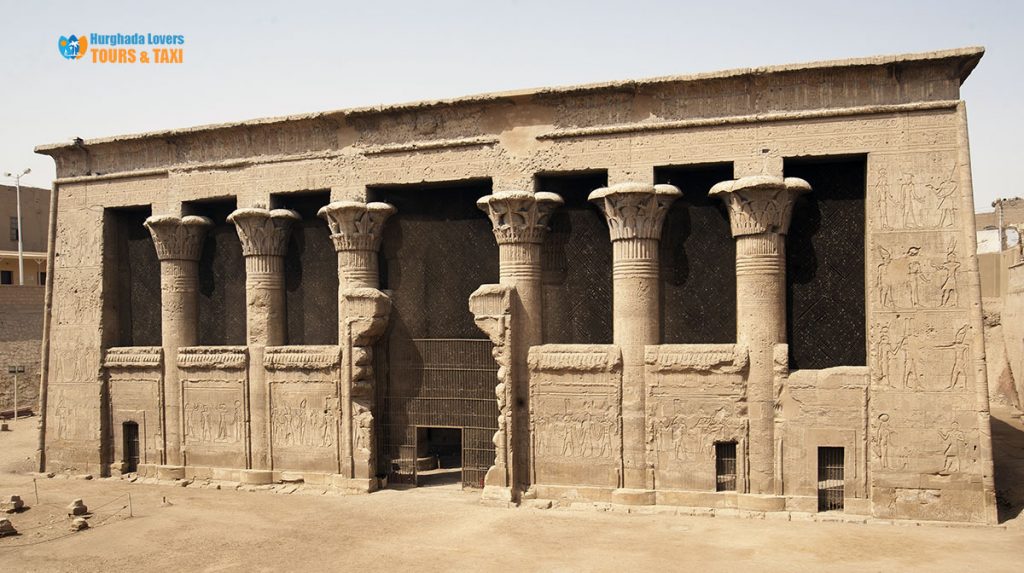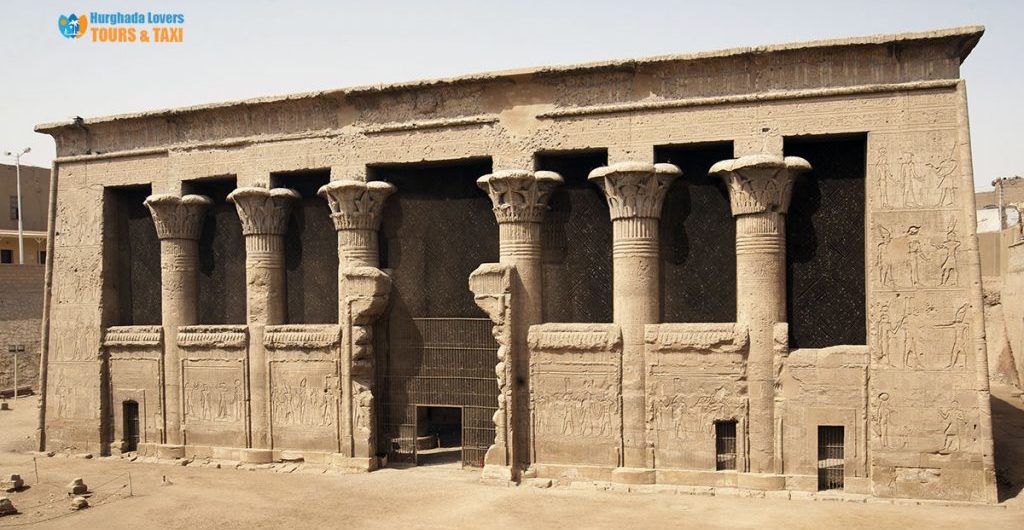Temple of Esna in Luxor Egypt | Temple of Khnum – Egyptian Temples
Temple of Khnum in Esna Luxor Egypt, Discover the Ancient Egypt History in building the most famous Egyptian temples Temple of the God Khnum, the most famous ancient Egyptian deities – Ancient Egyptian gods and Goddesses in the Ancient Egyptian religion.
Discover the secrets of the funerary Mortuary Temples and the ancient Pharaonic Egyptian Monuments in the Ancient Egypt civilization, information about the Pharaonic civilization and the secrets that were discovered and what the temple contains to tell us the secrets of the Pharaohs and more visiting times and ticket prices to visit the tourist attractions in Luxor in addition to the rare tourist attractions in Egypt
Temple of Esna Facts
Temple construction time: New Kingdom period 1991-1778 BC.
Temple construction period: 400 years.
Who built the Esna Temple?
The Temple of Khnum was first built during the reign of King Thutmose III of the Eighteenth Dynasty of Egypt in the The New Kingdom period, and one of the most famous ancient Egyptian Pharaohs kings.
but the current temple dates back in its design to the era of the Roman and Greek kingdoms “Greek-Roman era“, when the city of Esna became the third capital of Egypt from Upper Egypt as in the Geography of ancient Egypt, after Memphis and Thebes.
What is the reason for building the Esna Temple?
The Temple of Esna is primarily dedicated to the god Khnum (the ancient Egyptian god of the Nile River) but was also dedicated to a number of other ancient Egyptian and pharaonic deities, most notably God Neith (the goddess of war and ancient weaving), God Heka (God of Magic in ancient Egypt), God Seshat (the god of the Nile) and Menhet (the lion goddess).)
Who discovered the temple?:
In 1843 AD, during the reign of Muhammad Ali Pasha, ruler of Egypt, the Temple of Khnum was discovered and then restored, and the rubble was completely cleaned from the walls of the temple..
It is noteworthy that the scholar Jean-François Champollion discovered the existence of Pharaonic inscriptions of King Thutmose III in 1828 AD..
Map of the Temple of Khnum from the inside:
Upon entering the Esna Temple, you will see many highlights, such as the Hypostyle Hall (excavated), the Esna Temple Sanctuary, and the Gallery..
A visit to the Temple of Khnum includes a lot of fun and excitement, especially if we know that the temple was built approximately nine meters below ground level..
Here we see the Mariette Hall, which was excavated on the Hypostyle Hall, but the rest of the temple is still buried under the present-day city of Esna, and as a result, the temple appears to sit in a large hollowed-out pit of the city, indicating the development of Sculpture in Ancient Egypt and Architecture in ancient Egypt.
Although some of the stone blocks attesting to construction during the reign of Thutmose III have been reused on site, the oldest complete part of the temple is the rear wall of the hypostyle hall built during the Ptolemaic period and featuring scenes of King Ptolemy VI, Ptolemy VIII.
As for the rest of the temple of Khnum Esna
It was built during the reign of a series of Roman emperors from Claudius (41-54 AD) to Decius (249-251 AD).).
As you enter the Temple of Khnum, you will be struck by the ceiling of the hypostyle hall, supported by twenty-four columns with beautifully carved flower heads and designed in a variety of designs..
You will also notice, the shape of the columns decorated with Ancient Egyptian Language describing the religious festival “Pharaonic Feasts – Festivals in Ancient Egypt” and depicting several Roman emperors before ancient Egyptian gods..
For example, the reliefs depict the Emperor Trajan dancing before the god Menhet, and on the north wall of the hall the pharaoh is depicted hunting wild birds, which symbolically represents the annihilation of evil spirits as in Ancient Egyptian Literature and the stories of the pharaohs’ myths “Egyptian Mythology“.
In the eastern corner there is a strange hymn to Khnum where the god’s name is written using the hieroglyph of a crocodile, and in the opposite corner, the hymn is repeated but with the god’s name written with the head of a ram..
The decorations that can also be seen inside the Temple of Khnum include a number of calendars and a ceiling decorated with Egyptian astronomical figures on the north side and Roman astronomical signs on the south side to indicate the development of Ancient Egyptian science and Astronomy in ancient Egypt.
The temple contains 24 columns, on which are drawn Ptolemaic drawings and texts for the most important festivals that were held, such as the festival of raising the sky on the columns and the celebration of the potter on his wheel for the god Khnum, which was an ancient belief among the ancient Egyptians..
The most important pharaonic gods that were worshipped in the Temple of Esna:
The god Khnum, the god of creation, was represented in the form of a human being..
The God Khonsu, the moon god”
The goddess Menhit was represented in the form of a lion-headed emirate
goddess neith
God of War.“
Next to the Temple of Khnum is the Monastery of Menabos and the Martyrs, built in the 4th century AD..
You will find Pharaonic drawings and engravings on the temples, the story of Khnum, son of the god Khnum, the god of fruit for the Pharaohs. The walls were recorded with the Potter’s Wheel Festival, the story of God Ra struggle with humans, and the journey of the goddess Neith with God Satis to Asna..
You will also find reliefs of Emperor Claudius before Egyptian gods, drawings of King Ptolemy VI, and drawings of the Roman king and emperor Trajan and Marco..
Asna area:
The city was called Latopolis in the Roman and Greek eras. The area is located on the western side of the Nile River and temples were dedicated to the worship of the gods Khonsu, Khnum, Neith and Menhet..
The area of the Temple of Khnum is considered one of the most important Egypt Archaeological Sites in the era of the Pharaohs, as it was used for Trade in Ancient Egypt with Sudan through the Karkur Oasis..
Esna Temple Address:
Esna City, Luxor, Egypt.
Visiting hours:
Daily from 09:00 AM to 05:00 PM
Entrance ticket prices:
Note: Facts and secrets of the history will be added soon…
Hurghada Excursions Lovers, Best Travel Agency in Hurghada to provide daily tours to visit the Tourist attractions of Luxor by Hurghada to Luxor Tours and Hurghada to Pyramids Trips. Book online when you come to Hurghada, El Gouna, Sahl Hashish, Makadi Bay, Soma Bay, Egypt Tours Packages.

